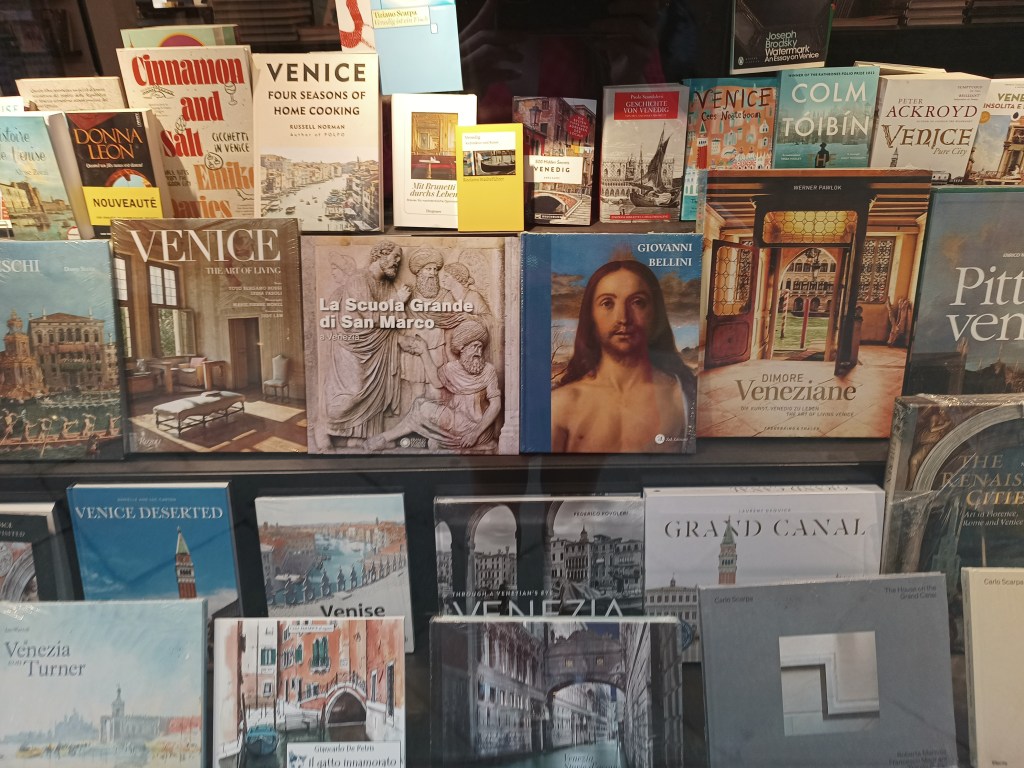

Following from my previous post where I talked about Venice’s cultural highlights, below is the overview of my literary exploration of Venice.
I. Studium Bookshop

This stylish bookshop, not far from St Mark’s Square, exceeded my expectations. It is packed with beautiful fiction and non-fiction books on many subjects, from travel guides and children’s fiction to Italian cook-books and illustrated marvels on Japanese art. There are also sections devoted to English, French and Spanish books, and the staff is very friendly. It is here that I bought my now-much-cherished Spanish-language edition of Italian classic The Betrothed by Alessandro Manzoni, and, as you can see from the photographs below, I was very impressed by this bookstore’s Corto Maltese section. Corto Maltese is a series of comic books by Hugo Pratt that talks about adventures of sailor Corto Maltese in the first and second decade of the twentieth century. One of those is titled Corto Maltese: Fable of Venice, and people also recommended to me the book The Secret Venice of Corto Maltese: Fantastic and Hidden Itineraries.
Continue reading “A Trip to Venice II: Literary Highlights”


